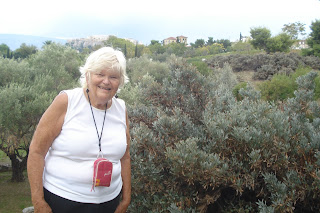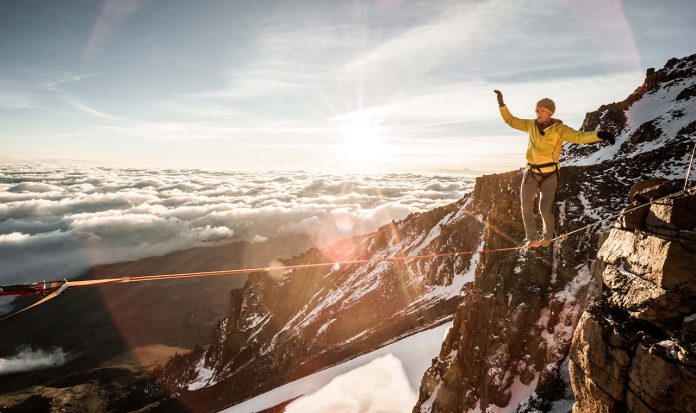If you read
part 1 of my series on my recent travels in Mongolia you already know that I arrived in Ulaanbaatar to discover a thoroughly modern, well kept, and orderly city that served as the perfect place to rest and recover before actually launching into the meat of this adventure. I had traveled halfway round the world to join a group of like minded adventurers taking part in
a fantastic itinerary that is offered by my friends at
Tusker Trail each year. And while I certainly enjoyed my time in UB, after a day or two of recouping from the long flights, I was more than ready to see what Mongolia had to offer us.
On our third day in country we caught an early afternoon flight for the town of Ulgii, which is the capital of the Bayan-Ölgii Aimag province. The city is home to about 28,000 people, and would serve as the true launching point of our journey, which would eventually take us into the heart of the remote and spectacular Altai Tavn Bogd National Park that falls on the border with China and Russia.
When we arrived in Ulaanbaatar, my fellow travelers and I were warned about something called the "Genghis Factor." Much like when you visit Africa and everything runs on "Africa Time," there are often factors that are beyond your control that can keep everything from running on a tight, efficient schedule. That means that when a flight is scheduled to leave at 2:00 PM in the afternoon, don't be too concerned if it doesn't actually begin an hour or more later. That's just the way things roll sometimes in Mongolia, and the Genghis Factor isn't just confined to flights. It can impact all kinds of other things as well, and it is best to just accept it, be patient, and roll with it while you're there.
That happened to be the case with our flight to Ulgii, which was about three hours in length with a brief stop over to pick up fuel and passengers at an intermediate point along the way. Ulgii was starkly different than Ulaanbaatar in that it was much more quiet and relaxed. The rural town has plenty of restaurants, markets, and shops for visitors, but it is definitely far from the hustle and bustle of the capital.
Our accommodations for our night Ulgii were at a local Ger camp, where we stayed in the traditional yurts that are common amongst the nomadic people that inhabit the remote regions of Mongolia. The gers found there were basic and comfortable, but would seem like palaces once we struck out for the Altai Mountains. We enjoyed one last night's sleep in a bed before we'd be relegated to tents and sleeping bags for the majority of the trip.
After an overnight in Ulgii it was time at last to hit the road. The entire group was eager to strike out for the backcountry, and we knew we had a long journey ahead. Outside of the major cities in Mongolia, most of the roads aren't paved. That means we had to take
Toyota Land Cruisers on seldom traveled jeep routes just to reach the starting point of our trip. That would prove to be quite an adventure in and of itself.
We made severals stops while en route to our first campsite, including visiting a Mongolian army base where we all checked in with the local authorities. But the most interesting stop was early on in the journey, when we met one of the legendary eagle hunters that call the region home. These hardy men use specially trained eagles to hunt down foxes that are found in the countryside. That activity typically takes place in the winter, and since we were visiting in the summer no one was heading out on a hunt. Still, were were able to not only get to see one of the hunters in his traditional gear, but also meet one of the enormous birds he uses for this task.
Our destination for the first day in the wild was a lake called Khoton Nuur. We would camp along the banks of that body of water for two days, allowing us to get accustomed to life in pastoral Mongolia while also meeting the horses (and horsemen!) who would see us through this adventure. But reaching Khoton Nuur would not be easy. It involved navigating narrow dirt roads for hours on end with only our guides' knowledge of the way to get us there safely. Along the way we would cross through rivers that were swollen with the summer melt-off following a snow winter and rainy spring. At one point, one of the vehicles even got bogged down in the middle of the water and had to be pulled out by another Land Cruiser. But eventually, after about six or seven hours of driving, we reached our destination, and it certainly did not disappoint.
Camping along the banks of the lake we could spot the Altai Mountains off int he distance. Snow glistened from their high peaks, while the tranquil waters of Khoton Nuur lapped lazily at the shore. The campsite sat on a wide open grassland, while the ger of a local family sat on a hill overlooking the proceedings. We all agreed that the site would be an amazing place to spend the first few nights in the field, and was an amazing scenic way to begin the first stage or our expedition into the mountains.
After getting settled into our tents and making ourselves at home, the entire group gathered in the two dining tents that Tusker has erected for us. These large, spacious, and comfortable shelters would become a refuge for all of us travelers in the days ahead, giving us a communal place to share stories, talk about the days events, and generally enjoy one another's company. They would also give us a warm place out of the elements where we could enjoy our meals too. Having climbed
Kilimanjaro with Tusker last year, I knew that we could expect some exceptional food on the trip, especially considering our remote locations. Tusker cooks receive training from the
Culinary Institute of America, and as a result they are often able to delight their guests with some delicious entrees that you would normally think would be possible so far from a "real" kitchen. Such was the case on this Mongolia trip as well, as Alex – one of Tusker's top cooks from Tanzania – was flown in just to ensure we had great meals each day. He achieved that mission throughout the journey.
After a good night's sleep along the banks of Khoton Nuur, we were all eager to get started the next day.
Tusker's Mongolia itinerary is mainly aimed at exploring the Altai Tavn Bogd National Park by horseback, although clients can elect to hike the route as well. Most would choose one or the other over the course of the two-week trip, but a few of us mixed things up, sometimes riding and sometimes trekking depending on how we felt on any given day. This flexibility was nice as well, as not everyone was completely comfortable on a horse, much preferring to cover the distance under their own power instead.
On our second day along the lake we were introduced to the mounts that would be our companions throughout the trip. The family ger that overlooked our campsite was home to a group of exceptional horsemen who have carved out a living on the steppe for generations. They also happen to have a large herd of horses that have been born and bred to deal with the challenges that are found there. On that morning, they brought those horses to our camp, were we discovered that each of us had been assigned a mount that was suited for our physical stature and personality. My particular horse was a strong, sturdy, and sure-footed animal who tended to start out slow in the morning, lagging behind the group, but would have a little extra skip in his step later in the day. That suited me just fine, because I often feel about the same.
That morning we had a nice orientation ride with our horses, taking them out on an easy trail that allowed us to get comfortable with one another. It didn't take long to discover that these creatures knew their way around quite nicely, and were adept at carrying their riders safely from one destination to the next. When paired with a comfortable Australian-style saddle, it took only minutes for me to feel at home on the back of my steed, and as the days past my skill and confidence only grew as well.
After riding for a couple of hours we found ourselves approaching the family ger. The lead horseman – a large good natured man by the name of Karbi – invited us all to dismount and come inside their home. It was our first opportunity to see the traditional yurt as an actual nomadic family lived in it, and it was one of the early highlights of the trip. Inside, we found snacks that included fried bread, local cheeses, and various other snacks. We were also offered milk-tea, which was graciously accepted.
As you can imagine, the nomadic Mongols live a simple life free from lots of material goods. Still, there home was decorated with a variety of tapestries, photos, and other items, and their sturdy furniture was comfortable and accommodating. The ger was warmed by a single cookstove that used yak dung for fuel, and there was plenty of room – and food – for all of the guests inside.
Mongol tradition says that the nomads won't turn away even strangers when they show up at their door. Their sense of hospitality is such that they will extend every courtesy to anyone that approaches. We saw that first-hand with the wonderful way the welcomed our group into the ger, offering food, conversation, and entertainment. At one point, Karbi pulled out a traditional stringed instrument from the steppe and proceeded to play and sing several songs. It was one of those priceless moments that only comes through travel when you find yourself at the perfect spot, at the perfect time.
After spending an hour or so enjoying the company of our new Mongol friends, we remounted our horses and made the brief ride back to our campsite. That would be all for the day, but we would be setting out early the next morning for our next destination, and on the first actual horse ride of the trip. While we had gotten acquainted with our mounts, and gotten to know the horsemen who would guide us some, the following day would be very different. It was time to begin the real trip, and I for one couldn't wait.
We camped one more night on the shores of Khoton Nuur, dreaming about the adventures to come. It had already been an amazing experience in Mongolia, and the real journey was only just about to get underway.
Stay tuned for more soon.

















































